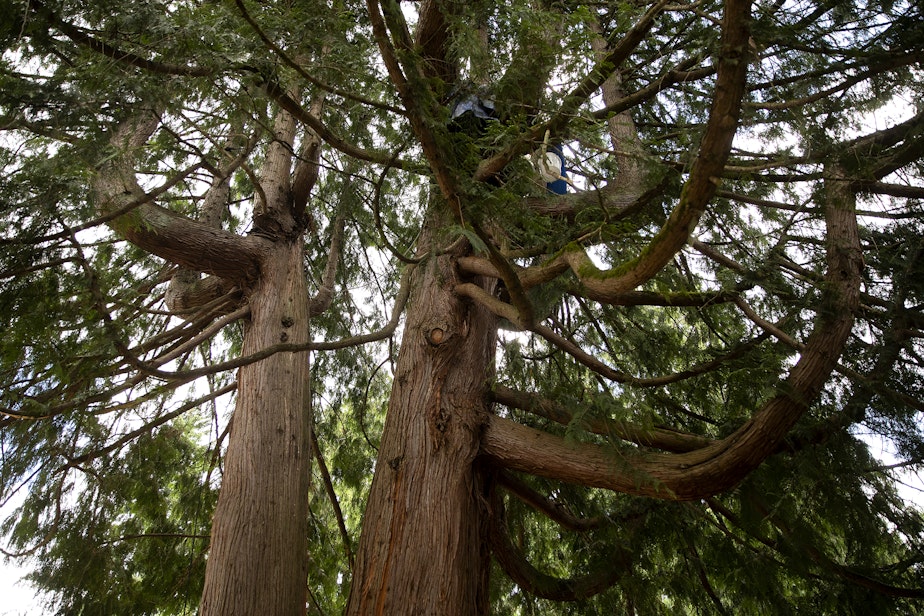Does Seattle’s tree protection ordinance protect developers more than trees?

Over the last 10 days, activists have taken up residence in a tree in Seattle’s Wedgewood neighborhood.
Their goal: Save the 80-foot Western red cedar named Luma.
The tree sits in the middle of a lot where developers plan to demolish a single-family home and build six new housing units. The protest highlights a growing tension in the city between green space and housing.
There’s a general understanding that urban tree canopy coverage is important, especially as the climate continues to warm, but there’s also a push to add density to cities to help ease the housing crisis.
Meanwhile, neighbors of these trees often feel a strong connection with them and trees can become local landmarks, or have significance for Native people.
Sponsored
All this makes seemingly stoic, unmoving trees an emotional flashpoint in the city. The Seattle City Council took up the issue this May when it passed a city ordinance meant to regulate and protect tens of thousands of new trees.
Some organizations, like the Urban Forestry Commission, are suspicious of developers' influence crafting the new law.
"At a high level, the new tree ordinance transfers the burden of protecting canopy from private land undergoing redevelopment and construction to homeowners and to the city with its parks lands," said Eric Scigliano, an author and science writer who looked into the Master Builders Association of King and Snohomish counties' role in shaping the new tree ordinance for InvestigateWest.
"The fundamental principle is that trees should not interfere with development and density that they can be removed and replanted with saplings that will take decades to reach maturity and provide significant canopy." he said.
Scigliano spoke with "Soundside" about the new tree ordinance and the role developers played in shaping the city policy.





